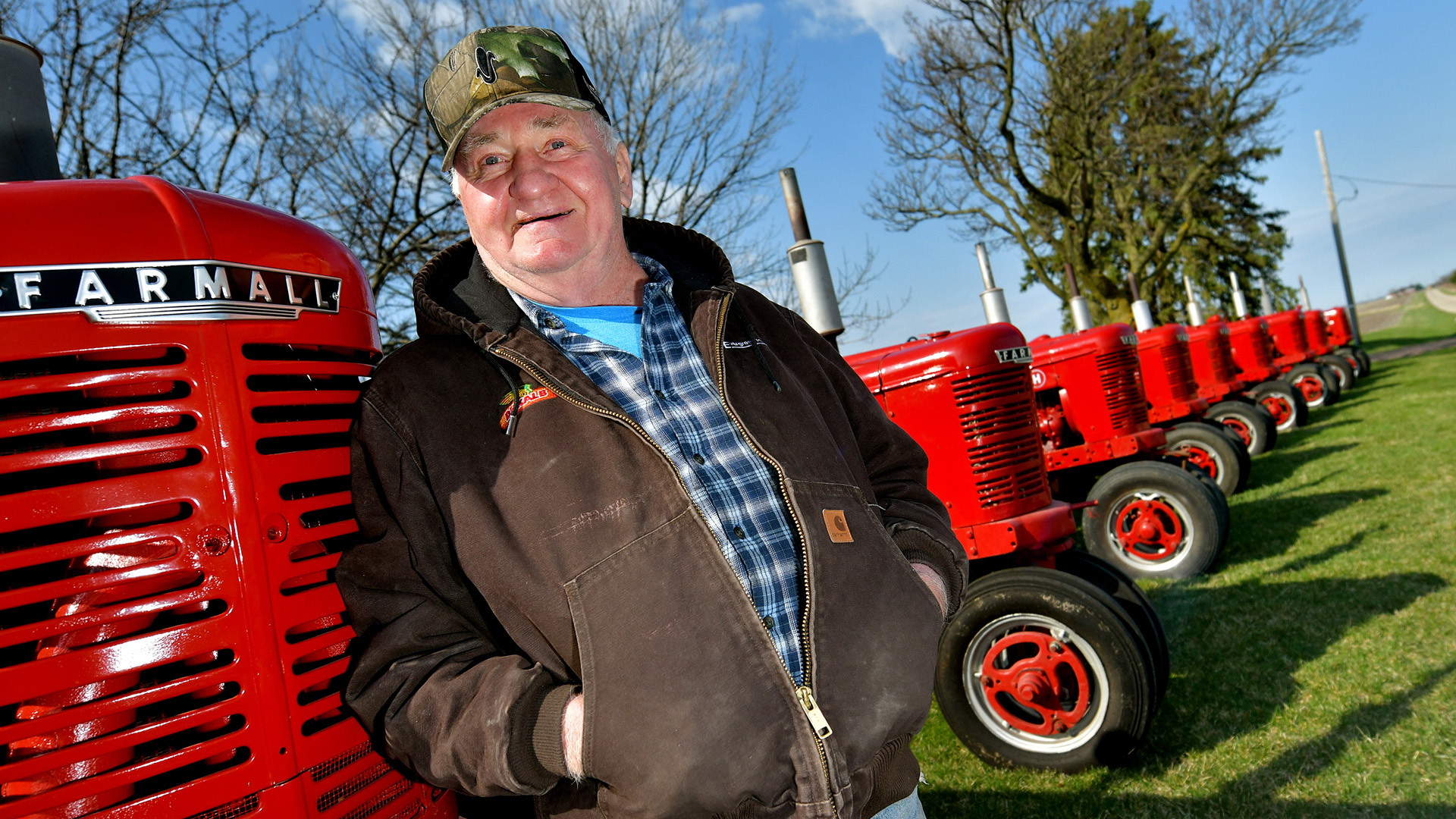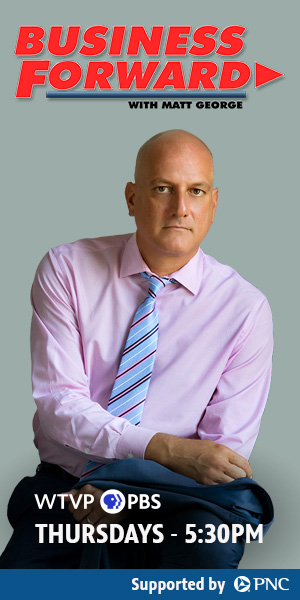From 8 a.m. to 2 p.m. on the Fourth of July and Labor Day, the restored Farmalls will be on display on U.S. 24, about a half-mile west of Braker’s Market
Eureka area farmer Ron Underwood may have taken his tractor collection a bit too far, but it’s a labor of love
On the Fourth of July, while driving east on U.S. 24 toward Eureka, one might do a double-take upon seeing the line of beautiful, bright red tractors lined up along the roadside.
They’re not just any ol’ tractors. They are all Farmall tractors from the 1940s and ‘50s, beautifully restored to their like-new appearance by Eureka area farmer Ron Underwood.
Each Memorial Day, Fourth of July and Labor Day, weather permitting, Underwood lines up as many of his restored Farmalls as he can get started that day. “They all start a little bit different,” he said. “Sometimes I have to talk to ‘em a little bit to get them going.”
A fondness for Farmalls
Twenty years ago, Underwood started his tractor restoration hobby to keep from spending his golden years drinking coffee in local diners or vegging out in front of the TV.
To date, he has restored 18 Farmall tractors, manufactured some 80 years ago by International Harvester.
Following in the footsteps of his father and grandfather, Underwood started working in the fields at age 9, right about the time his father began renting a farm and farmhouse west of Eureka.
He has lived elsewhere in the ensuing years, but a couple of decades ago Underwood purchased that boyhood home, where he now resides with his wife Lois.
Now 81, Underwood is partial to the Farmall because that was his father’s tractor of choice. The Underwood family has remained loyal to the International Harvester brand, now known as Case IH, to this very day. Underwood continues to farm 1,300 acres with his son Curt and grandson Lane Fowler. Brother Gerry steps in to help during the busiest times.
“My son and grandson do all the thinking and getting everything rolling,” said Underwood. “So much of it is computerized in the tractor. I couldn’t begin to get them ready to go.
“We’ve got two big machine sheds where we keep our working planters and combines. That’s our priority for the good stuff,” he added. “This shed here, we had room for tractors and I filled it” with the Farmall collection.
A labor of love
Originally manufactured in 1920, Farmall was an all-purpose tractor, affordable for the owners of small to medium-sized family farms. The machines enabled many farmers to reduce the number of farm hands and eliminate the need for working horses or mules.
After restoring those first two Farmalls, Underwood went searching for more of them to fix up. He was having fun.
‘I’ve got one that’s the same age as I am, a 1941’ — Ron Underwood
He purchased some of the dilapidated, faded, dirty tractors from farm sales. Others in similar condition he has acquired by word-of-mouth. “Somebody will call up and ask if I want another one,” he said.
He usually pays about $1,000 for the old Farmalls. “With paint and decals — I don’t count my labor — I’ve got probably another $400 to $500 in each one,” Underwood said.
He does all the work himself. “I tear them apart and clean ‘em up,” said Underwood. “Carburetors are easy to work on.
“And thank goodness I’ve got Interstate Battery down the road here. I wish I’d bought stock in that company. I’m always running to Interstate for batteries.”
Underwood applies four coats of the original Farmall red paint to each one of his restorations. He taught himself how to do the body work. “I make mistakes and then do it better the next time,” he said.
Tires for one tractor can cost about $2,000. “As long as the tires stay up and are equal on each side, I don’t buy new ones,” he said.
All of Underwood’s Farmalls are from the company’s “letter series” – models C, H, or M.
“I’ve got one that’s the same age as I am, a 1941,” said Underwood. “There’s an old M sitting down there. It’s a 1940. All the rest of these are ’41 to ‘52.
“I like to put ‘em back the way they came out of the factory,” said Underwood.
Underwood’s restoration process begins in the winter, “just cleaning the grease, sanding.” By July, once all the crops are in the ground, “I start putting them back together, putting on the tires and the wheels, hood and radiator.”
He tries to restore one tractor a year. “One year I did three of them. That’s too much.”
The romance of yesteryear has its limits
Thinking back to his early days of farming, “I wouldn’t mind going back to those days sometimes, but just for a short time,” said Underwood.
“Dirty, sitting down in that tractor. You’d get up early in the morning, a little damp, and by 10 in the morning, you had a mask of dust on your face.
“Today, if the air conditioner quits, I quit,” he said.
Displaying the restored Farmalls is a real kick for Underwood. “People will stop by. I don’t know who they are or where they came from, but they’ll say, ‘My grandpa had one of them.’
“Then you just talk. It’s something to do.”
Underwood has not sold any of his restored tractors, “but I’ve got three or four 1948s I may pick out and sell … and ‘46s,” he said. “I’ve got too many. You’re always buying batteries and having trouble getting them started, unless you run them every day, which I don’t.
“I’ve gotta back off sooner or later and turn around and buy another one.”
Underwood figures he needs to acquire two more models to fill out his collection: a ’39 and a ’45.
He winces when thinking about the one that got away. “I was bidding on a ’45 years ago and I quit too soon bidding, or I would have had it.” He admits he still kicks himself for not staying in the bidding, “but then sometimes I kick myself for buying one, too.”





